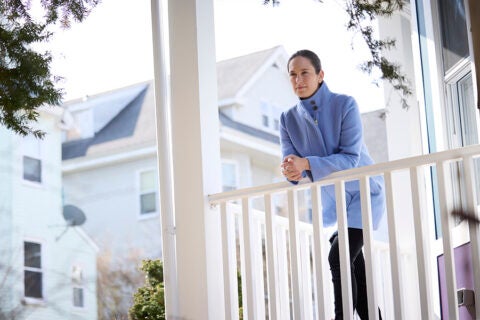 Gabriella Stern is the Director of Communications for the World Health Organization, a position she held throughout the COVID-19 pandemic. She shared the following pandemic lessons-learned with Harvard T.H. Chan School’s Center for Health Communication in Fall 2022 as part of its workshop series “Health Communication in a Changing World.”
Gabriella Stern is the Director of Communications for the World Health Organization, a position she held throughout the COVID-19 pandemic. She shared the following pandemic lessons-learned with Harvard T.H. Chan School’s Center for Health Communication in Fall 2022 as part of its workshop series “Health Communication in a Changing World.”
Lesson 1: Integrate communication strategy into your organization’s day-to-day decision-making process.
Building a narrative means messaging should never be an afterthought. Instead, make it a guiding principle.
For example: The World Health Organization made daily press conferences an essential part of our global COVID-19 response. They were led by the WHO’s Director General and our COVID-19 response leaders and gave us an opportunity not only to hear what people were concerned about but also to communicate evolving scientific understanding of COVID in real time.
Then, when the first COVID-19 vaccines became available, our Director General prioritized vaccine equity. He made communications part of that effort from day 1: My team designed and launched a campaign for vaccination to begin in every country in the first 100 days of 2021.
Lesson 2: Listen, listen, listen.
We can’t simply broadcast the messages we want people to hear. We need to engage people, go to the channels they receive information, and truly listen to what they want and need—and learn from them when they have valuable insights.
For example: During the global 2022 Mpox (monkeypox) outbreak, WHO leadership and experts held many large, virtual forums with a wide range of affected community groups from around the world, to share our current knowledge and guidance, and hear and learn from people outside the organizational bubble. These engagements allowed us to serve, adapt to, and pivot to meet people’s needs.
Lesson 3: To reach a diverse audience, build a diverse team.
Getting input from collaborators with a wide variety of cultural and professional backgrounds will make your messages more inclusive and accessible as well as ensure intellectual rigor.
For example: The initial handling of the COVID-19 pandemic by public health professionals largely from high-income countries was sometimes overly reliant on orthodoxy or longstanding approaches. A more open, inclusive approach, involving more voices—particularly from low- and middle-income countries—would have been better suited for such an unprecedented moment.
Lesson 4: Be humble, transparent, and open.
Projecting these qualities—while delivering consistently—builds credibility over time by showing your audience that they can trust you.
For example: Messaging during the pandemic fell short when science was presented as immutable. Instead, communicate the nature of the scientific process, uncertainty and evolving: Here’s what we know, here’s what we don’t know, and here’s what we’re doing to find out.
Lesson 5: Form working partnerships with the organizations and platforms that people already rely on for information.
News outlets, tech companies, gaming sites, sports teams, religious groups, youth organizations and other groups and platforms can help bridge the gap between public health experts and the general public, making messages more likely to reach their intended audience.
For example: During the global 2022 Mpox (monkeypox) outbreak, the WHO worked with dating apps, including Tinder and Grindr, and produced resources for event organizers to engage people about the risks associated with the disease and precautions that they can take to protect themselves.
And during 2021, when many people were getting vaccinated, we partnered with multiple different content creators to talk about the importance of vaccines—including YouTube channels aiming to educate high-schoolers.




